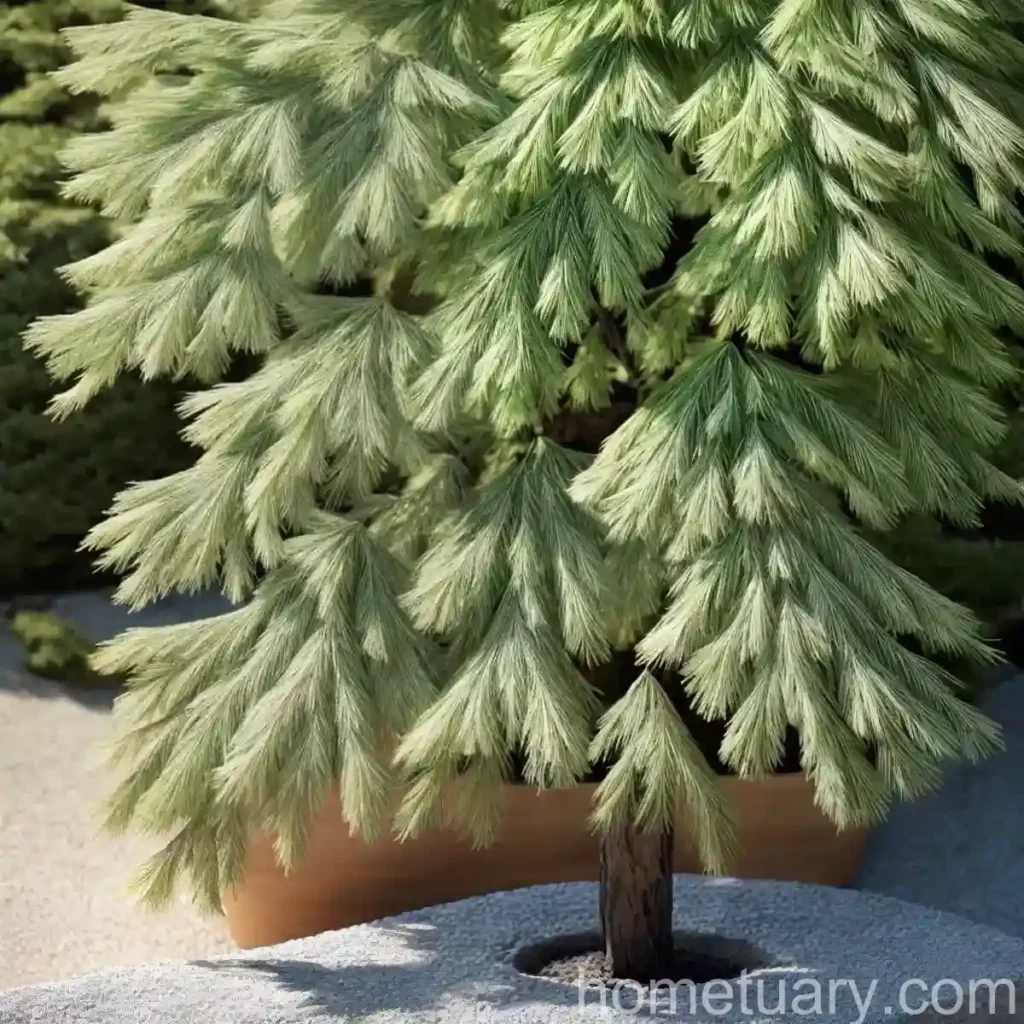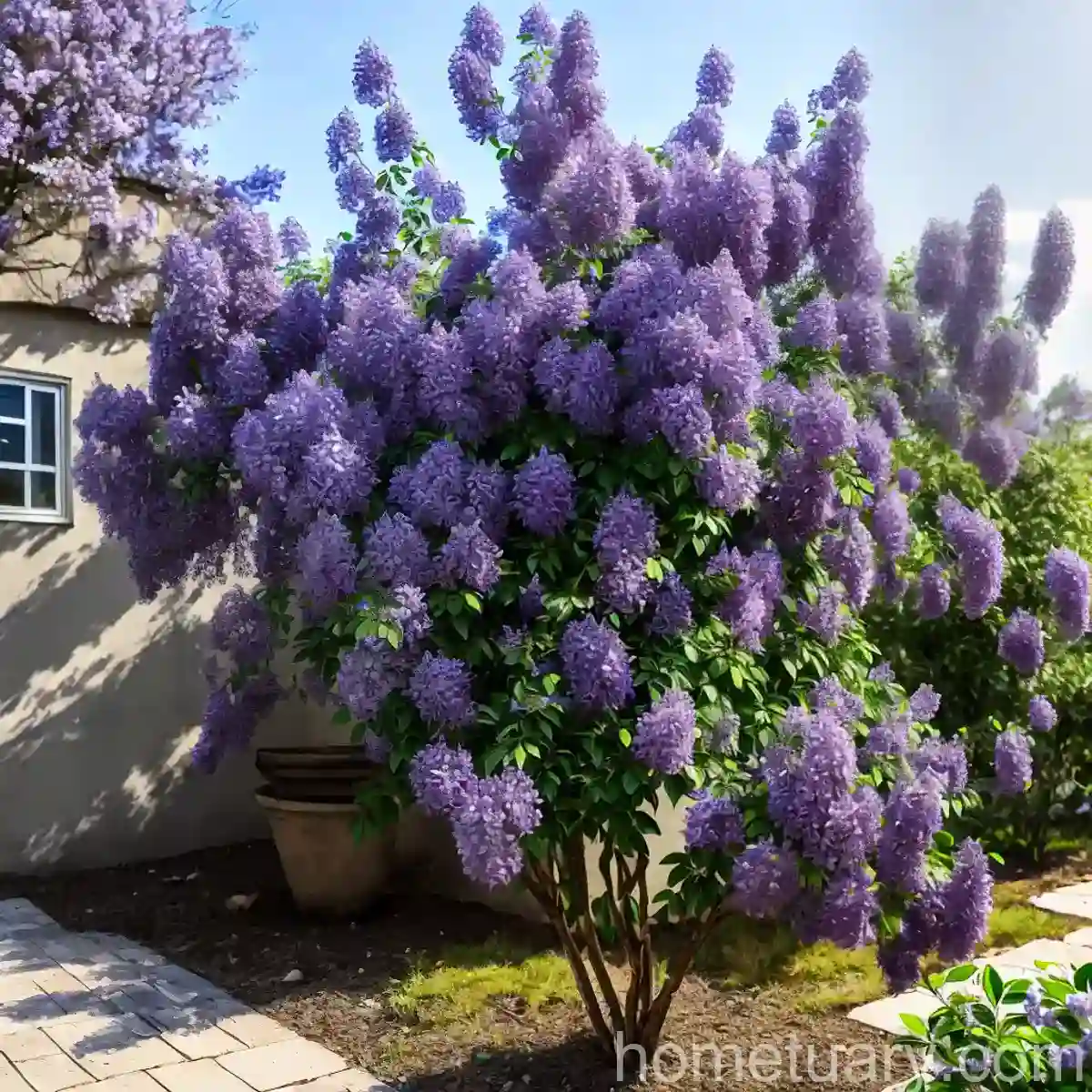Japanese Larch (Larix kaempferi ‘Stiff Weeping’)
The Japanese larch (Larix kaempferi ‘Stiff Weeping’) is a striking ornamental tree that adds a touch of elegance to any landscape. Its weeping form, combined with its vibrant green foliage and interesting bark texture, makes it a popular choice among gardeners and landscapers. In this comprehensive guide, we will delve into all aspects of the Japanese larch, including its cultural requirements, uses, maintenance, and more. Whether you are a seasoned plant enthusiast or a novice gardener, this article will equip you with the knowledge to successfully cultivate and care for the Japanese larch.
What is the Japanese Larch?
The Japanese larch, scientifically known as Larix kaempferi, is a deciduous coniferous tree that is native to Japan. It belongs to the Pinaceae family and is renowned for its graceful, weeping habit. In particular, the ‘Stiff Weeping’ variety of the Japanese larch is prized for its unique growth pattern, which distinguishes it from other cultivars of Larix kaempferi. This cultivar is characterized by its stiff, downward-sloping branches, creating a stunning cascading effect that is truly captivating.
Key Takeaways
Before delving into the specifics of the Japanese larch, let’s summarize the key takeaways of this remarkable tree:
- Plant Name: Japanese larch (Larix kaempferi ‘Stiff Weeping’)
- Botanical Name: Larix kaempferi ‘Stiff Weeping’
- Cultivar: Stiff Weeping
- Family: Pinaceae
- Native Habitat: Japan
- Growth Habit: Weeping
- Foliage: Vibrant green needles
- Uses: Ornamental, landscaping
- Hardiness Zone: 4-7
- Mature Height: 15-20 meters
- Maintenance Level: Moderate
Now, let’s explore the various aspects of the Japanese larch in detail.
Culture
Water
The Japanese larch thrives in moist, well-draining soil. While it can tolerate occasional periods of drought once established, it prefers consistent moisture, especially during the growing season. When planting a Japanese larch, it is crucial to ensure that the soil is adequately hydrated. However, it is equally important to prevent waterlogging, as excessive moisture can lead to root rot and other detrimental conditions.
Sunlight
In terms of sunlight requirements, the Japanese larch performs best in full sun to partial shade. It is essential to provide the tree with ample sunlight to promote healthy growth and vibrant foliage. While it can tolerate partial shade, a location that receives at least six hours of direct sunlight daily is ideal for optimal performance.
Fertilizer
When it comes to fertilization, the Japanese larch benefits from a balanced, slow-release fertilizer applied in early spring. Slow-release formulations provide a sustained source of nutrients, supporting the tree’s growth over an extended period. Select a fertilizer with a balanced NPK ratio, such as 10-10-10, and follow the manufacturer’s recommendations for application rates.
Soil
The Japanese larch thrives in moist, acidic soil with good drainage. It is essential to avoid waterlogged or compacted soil, as these conditions can compromise the tree’s health. Prior to planting, it is advisable to amend the soil with organic matter, such as compost or well-rotted manure, to improve its texture and fertility. Additionally, maintaining a slightly acidic soil pH in the range of 5.5 to 6.5 is optimal for the Japanese larch.
Pruning
Pruning is an essential aspect of Japanese larch maintenance, particularly for the ‘Stiff Weeping’ variety. This cultivar’s weeping branches benefit from periodic pruning to maintain their elegant form and prevent overcrowding. In late winter or early spring, when the tree is dormant, carefully prune any damaged, crossing, or crowded branches to enhance the tree’s overall structure and appearance. Additionally, light pruning may be performed throughout the growing season as needed.
Propagation
The propagation of Japanese larch can be achieved through several methods, including:
-
Seed Propagation: Collect mature cones in the fall and extract the seeds for sowing. Stratify the seeds in a moist, refrigerated environment for several weeks before planting them in a suitable growing medium. Seeds typically germinate within a few weeks, and the resulting seedlings can be transplanted once they have developed sufficiently.
-
Cutting Propagation: Semi-hardwood cuttings can be taken from the Japanese larch in late summer to early autumn. Prepare the cuttings with a heel, dip them in a rooting hormone, and plant them in a well-draining propagation medium. Enclose the cuttings in a humid environment to promote root development, and once rooted, they can be potted up individually.
Container Popularity
The Japanese larch, particularly the ‘Stiff Weeping’ cultivar, is well-suited for container cultivation, making it an excellent choice for patios, balconies, and small gardens. When grown in containers, the tree’s cascading habit creates a captivating focal point, adding a touch of elegance to any outdoor space. Its adaptable nature and moderate growth rate further contribute to its popularity as a container plant.
Container Soil
When cultivating Japanese larch in containers, it is essential to use a well-draining, acidic potting mix. A blend formulated for acid-loving plants, such as rhododendrons or azaleas, is suitable for the Japanese larch. Ensure that the container has adequate drainage holes to prevent waterlogging and maintain the tree’s overall health.
Common Diseases
The Japanese larch is generally resilient to most pests and diseases; however, it may be susceptible to certain issues under specific conditions. Some common diseases that may affect the Japanese larch include:
-
Needle Cast: This fungal disease can cause the tree’s needles to turn yellow or brown and prematurely drop. Proper cultural practices, such as ensuring good air circulation and avoiding overhead watering, can help mitigate the risk of needle cast.
-
Phytophthora Root Rot: Excessive soil moisture can lead to phytophthora root rot, a potentially serious condition that affects the tree’s root system. To prevent this disease, avoid waterlogging and ensure proper soil drainage.
-
Canker Diseases: Various canker pathogens can affect the Japanese larch, causing the formation of sunken, discolored lesions on the branches or trunk. Pruning affected branches and promoting overall tree vigor through proper care practices can help manage canker diseases.
Disease Diagnosis
Diagnosing diseases in the Japanese larch involves careful observation of the tree’s symptoms and, in some cases, may require professional assistance. When confronted with unusual browning or discoloration of needles, or the presence of lesions on the tree’s branches, it is essential to promptly investigate and identify the underlying cause. Consultation with a plant health specialist or horticulturist may be necessary to accurately diagnose and address any potential diseases affecting the tree.
Common Pests
While the Japanese larch is generally resistant to many pests, it may occasionally encounter pest-related challenges. Some common pests that may affect the Japanese larch include:
-
Aphids: These small, sap-sucking insects can cluster on the new growth of the Japanese larch, causing distorted foliage and the secretion of honeydew. Natural predators and horticultural oils can be utilized to manage aphid populations.
-
Larch Casebearer: The larch casebearer is a moth whose larvae feed on the needles of larch trees, including the Japanese larch. Monitoring the tree for signs of infestation and employing targeted insecticidal treatments when necessary can help control larch casebearer populations.
-
Sawflies: Sawfly larvae may feed on the foliage of the Japanese larch, causing defoliation in severe cases. Physical removal of larvae and the application of insecticidal soap can aid in managing sawfly infestations.
Botanist’s Tips
As a plant scientist, I have gathered valuable insights and tips for successfully cultivating and caring for Japanese larch (Larix kaempferi ‘Stiff Weeping’). Here are some recommendations to ensure the optimal growth and health of this magnificent tree:
-
Site Selection: Choose a well-drained location with sufficient sunlight for planting the Japanese larch. Avoid areas with prolonged standing water or heavy, compacted soil.
-
Watering: Provide regular, consistent moisture to the Japanese larch, especially during the establishment phase. Monitor soil moisture levels and adjust watering as needed to maintain an optimal balance.
-
Pruning Technique: When pruning the ‘Stiff Weeping’ variety, focus on enhancing the tree’s weeping form by selectively removing overcrowded or irregular branches. Aim to maintain the tree’s graceful silhouette while promoting air circulation within the canopy.
-
Disease Management: Implement proactive disease prevention measures, such as practicing proper sanitation and cultural care, to minimize the risk of common diseases that may affect the Japanese larch.
-
Pest Monitoring: Regularly inspect the tree for signs of pest activity, such as distorted foliage, abnormal growth, or the presence of larvae. Early detection of pests enables timely intervention and effective control measures.
-
Soil pH Maintenance: Monitor and adjust the soil pH as needed to ensure that the Japanese larch receives an acidic growing medium, conducive to its preferences.
Fun Facts
While the Japanese larch (Larix kaempferi ‘Stiff Weeping’) offers numerous practical and aesthetic benefits, it also presents some intriguing and noteworthy characteristics. Here are a few fun facts about the Japanese larch:
-
The Japanese larch is one of the few deciduous conifers, shedding its needles in the autumn and displaying stunning gold and orange hues before defoliation.
-
The ‘Stiff Weeping’ variety’s unique growth habit makes it an exceptional choice for creating focal points in water-wise or xeriscape landscapes, adding a touch of grace and movement to the scenery.
-
In Japanese culture, the larch tree holds symbolic significance, often representing resilience, adaptability, and the changing of seasons.
Links to External Resources
For further exploration of Japanese larch (Larix kaempferi ‘Stiff Weeping’) and related topics, the following external resources provide valuable information and insights:
-
Royal Horticultural Society (RHS) – Japanese Larch: https://www.rhs.org.uk/plants/26396/i-larix-kaempferi-i-stiff-weeping/details
-
Missouri Botanical Garden – Larix kaempferi: http://www.missouribotanicalgarden.org/PlantFinder/PlantFinderDetails.aspx?taxonid=280820&isprofile=0&
-
University of Florida IFAS Extension – Japanese Larch for the Urban Landscape: https://edis.ifas.ufl.edu/publication/ep132
-
The American Conifer Society – Larix kaempferi: https://conifersociety.org/conifers/larix-kaempferi/
-
Plant Pathology Fact Sheet – Needle Cast Diseases of Conifers: https://www.ppath.cas.psu.edu/documents/PlantDiseasefactsheets/NeedleCast/ConeLPNeeldcastfinal.pdf
This collection of resources offers a comprehensive understanding of the Japanese larch, covering various aspects from cultural preferences to disease management and beyond.
In conclusion, the Japanese larch (Larix kaempferi ‘Stiff Weeping’) is a captivating tree with distinctive characteristics that make it a prized addition to gardens, landscapes, and container plantings. By understanding its cultural requirements, maintenance practices, and potential challenges, enthusiasts can foster the growth of thriving Japanese larch specimens, reaping the rewards of its graceful beauty and year-round appeal. Whether admired for its ornamental value, ecological contributions, or cultural significance, the Japanese larch stands as a testament to the enduring allure of nature’s botanical wonders.















